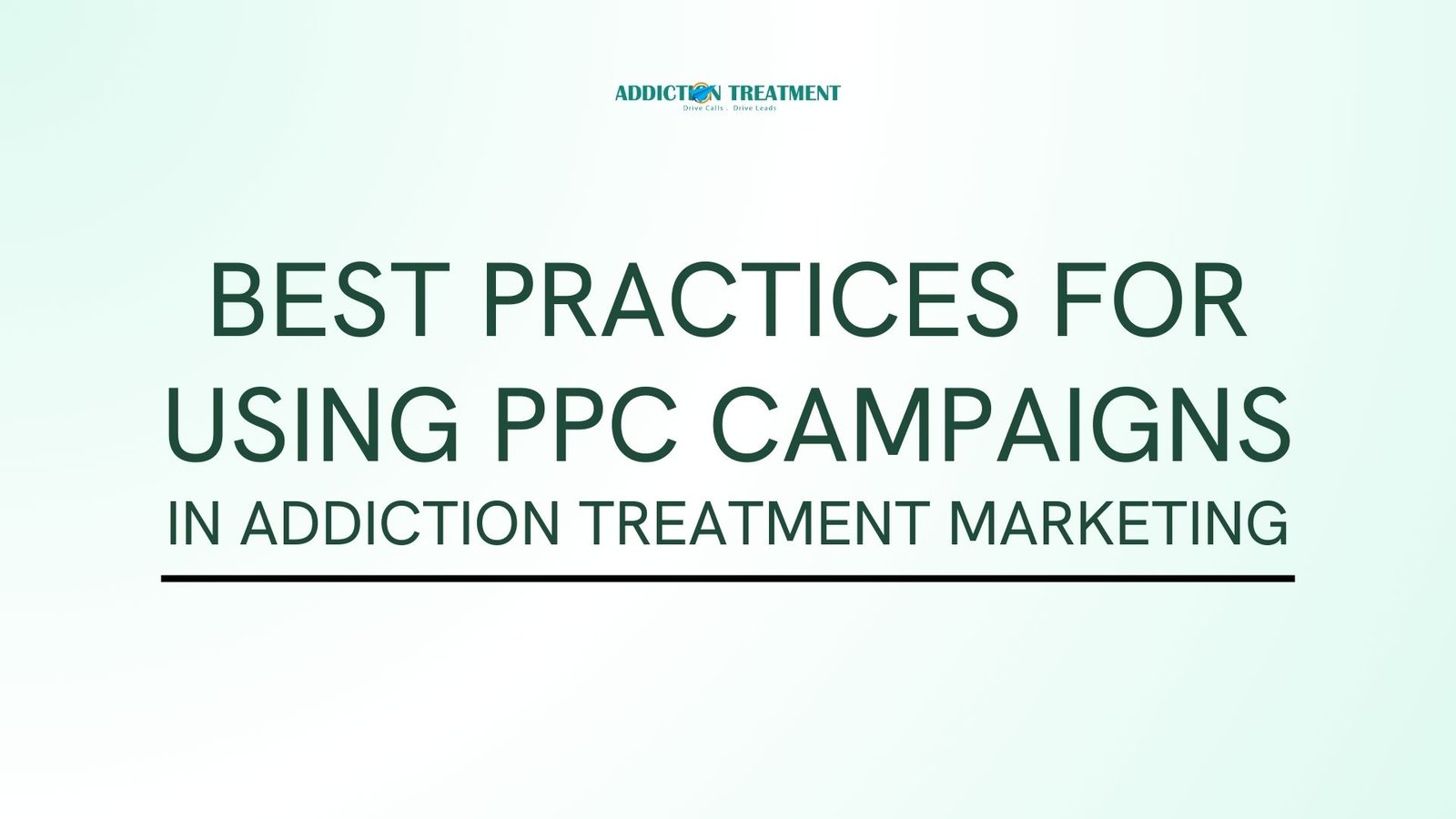Pay-per-click (PPC) campaigns have become a cornerstone of addiction treatment marketing. They provide a direct path to reach individuals seeking help, allowing treatment centers to connect with their audience at the right time. However, due to the sensitive nature of addiction treatment, crafting and managing PPC campaigns requires careful planning and adherence to strict guidelines. This article explores the best practices for running successful PPC campaigns in the addiction treatment industry.
1. Understand the Role of Compliance
Compliance is the foundation of PPC campaigns in addiction treatment marketing. With platforms like Google enforcing strict advertising policies, failing to comply can lead to disapproval or suspension of ads.
- LegitScript Certification: Secure LegitScript certification to advertise on platforms like Google and Facebook. This ensures that your campaigns meet the industry standards for transparency and credibility.
- Accurate Ad Copy: Avoid misleading or exaggerated claims in your ads. Stick to factual statements about your services and outcomes.
- Privacy Protection: Ensure your website and landing pages comply with HIPAA regulations to protect patient data.
2. Conduct Thorough Keyword Research
Keyword research is critical for targeting the right audience and optimizing ad spend.
- Focus on High-Intent Keywords: Target keywords that indicate immediate need, such as “inpatient rehab near me” or “addiction treatment center.”
- Use Negative Keywords: Add irrelevant or low-converting keywords as negative keywords to prevent wasted clicks. For example, terms like “free rehab” might attract unqualified leads.
- Leverage Local Keywords: Include location-specific keywords to target audiences in specific areas effectively.
3. Optimize Landing Pages for Conversions
Your PPC efforts are only as effective as the landing pages they lead to. An optimized landing page ensures that visitors convert into leads.
- Clear Call-to-Action (CTA): Use prominent and action-oriented CTAs such as “Get Help Today” or “Speak to a Specialist.”
- Fast Loading Speed: Ensure your landing pages load quickly to reduce bounce rates.
- Responsive Design: Create mobile-friendly landing pages to cater to users accessing your site from smartphones or tablets.
- Trust Elements: Include testimonials, certifications, and success stories to build credibility.
4. Segment Your Audience
Segmenting your audience allows for more personalized and relevant PPC campaigns.
- Geographic Segmentation: Focus on specific regions or cities to maximize relevance and ROI.
- Behavioral Targeting: Use data to understand user behavior and tailor ads accordingly, such as targeting users who have previously visited your website.
- Demographic Targeting: Adjust your campaigns to target age groups or income levels that align with your ideal patient profile.
5. Utilize Retargeting Campaigns
Retargeting is an effective way to re-engage users who have interacted with your website or ads but didn’t convert.
- Dynamic Ads: Serve personalized ads based on the pages a user visited on your website.
- Email Retargeting: Use PPC campaigns to target individuals who have subscribed to your newsletters or downloaded resources.
- Cross-Platform Retargeting: Expand retargeting efforts across platforms like Google Display Network, Facebook, and YouTube.
6. Track Performance with Analytics
Regular performance monitoring is essential for ensuring the success of PPC campaigns.
- Set Up Conversion Tracking: Use tools like Google Ads conversion tracking to measure leads, calls, or form submissions generated by your ads.
- Monitor Key Metrics: Focus on cost per click (CPC), cost per lead (CPL), and conversion rates to gauge campaign effectiveness.
- A/B Testing: Test different ad copies, landing pages, and keywords to identify the most effective combinations.
7. Budget Strategically
Budget allocation can make or break your PPC campaign’s success.
- Focus on High-ROI Campaigns: Allocate more budget to campaigns that generate the highest returns.
- Bid Strategically: Use bidding strategies like target CPA (cost per acquisition) or maximize conversions to optimize your spend.
- Monitor Budget Utilization: Regularly review your spending to ensure your budget aligns with campaign performance.
8. Leverage Ad Extensions
Ad extensions can enhance your PPC ads by providing additional information and improving click-through rates (CTR).
- Call Extensions: Add a phone number to your ad, making it easier for users to contact you directly.
- Sitelink Extensions: Include links to key pages such as “About Us,” “Treatment Programs,” or “Contact Us.”
- Location Extensions: Display your treatment center’s address and a clickable map to encourage local visitors.
9. Focus on Emotional Messaging
The tone and content of your ads play a vital role in connecting with individuals seeking addiction treatment.
- Empathetic Language: Use compassionate and understanding language to resonate with your audience’s struggles.
- Highlight Benefits: Showcase the outcomes of your programs, such as “Begin your journey to recovery today.”
- Avoid Stigma: Ensure your messaging is free from judgment or language that might alienate your audience.
10. Stay Updated with Industry Trends
The digital advertising landscape is constantly evolving. Staying informed can give your campaigns a competitive edge.
- Monitor Algorithm Changes: Keep an eye on updates from Google and Facebook to adjust your strategies accordingly.
- Adopt New Formats: Explore emerging ad formats like responsive search ads or video ads for better engagement.
- Follow Competitors: Analyze the strategies of other addiction treatment centers to identify opportunities for improvement.
Conclusion
PPC campaigns can be a powerful tool for addiction treatment centers to reach individuals in need of help. By focusing on compliance, audience segmentation, and performance tracking, you can create campaigns that drive high-quality leads and positive outcomes. Implement these best practices to scale your efforts effectively while maintaining the integrity of your marketing.


Leave a Reply